Complete Guide to Generating PDFs from Airtable
A comprehensive guide explaining how to export Airtable data to PDF in 2025, covering both native export and automated solutions with Typeflow. The article details step-by-step processes, best practices, and integration options for businesses seeking efficient document generation.
Pro Tip
We recommend creating an account with Google. It offers the best experience possible.
Exporting data from Airtable to PDF shouldn't be a headache, yet many businesses struggle with this seemingly simple task. While Airtable offers a basic export feature, it often falls short when you need to generate professional-looking documents at scale. Whether you're creating invoices, contracts, or reports, you need a solution that combines efficiency with customization.
In this step-by-step guide, we'll explore both the quick native export method for simple needs and an automated solution for handling bulk exports with professional formatting. You'll learn how to transform your Airtable records into polished PDFs while saving hours of manual work. Let's dive into the most effective methods available in 2024.
Quick Native Export in Airtable
The simplest way to export data from Airtable to PDF starts right in your base:
- Click the view menu dropdown
- Select 'Print view'
- Choose 'Save as PDF' in your browser's print dialog
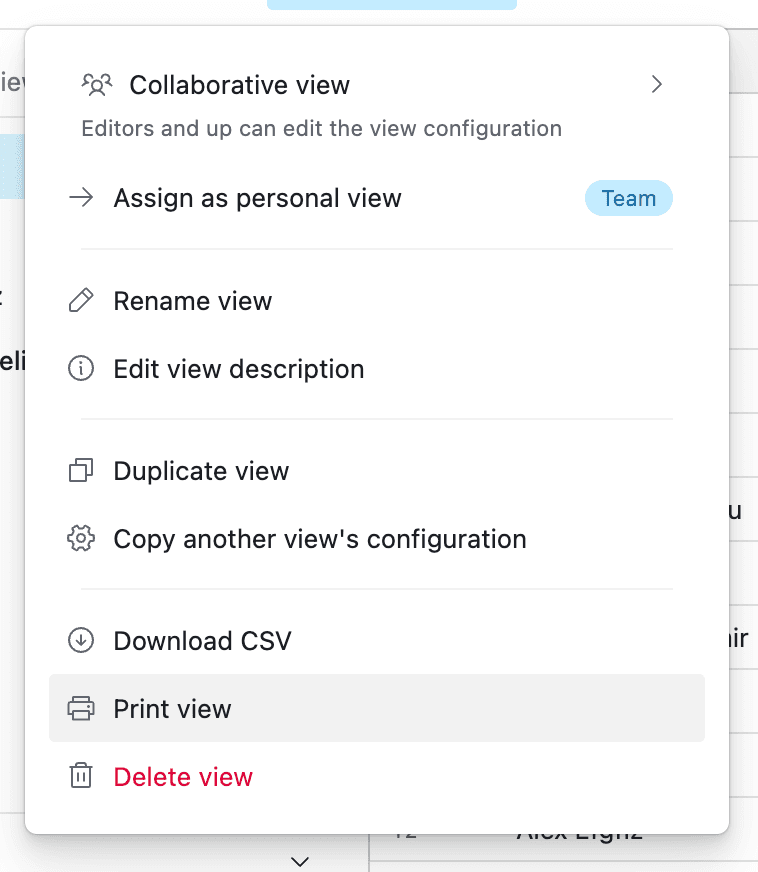
While this method works for basic needs, it has significant limitations:
- No customization options
- Basic formatting only
- Single-record exports
- Manual process
Before we begin, make sure you have:
- An Airtable account with at least one base set up
- A Typeflow account (don't have one yet? Sign up here)
- A Google account (for template creation)
The Mail Merge Challenge OR Airtable Mass export to PDF
When you need to generate multiple customized PDFs - like invoices, contracts, or reports - the native export falls short. This is where the concept of mail merge becomes crucial.
Traditional mail merge combines:
- A database (your Airtable records)
- A template (your document design)
- Merge fields (dynamic data placeholders)
However, most solutions either:
- Require complex setup
- Don't maintain formatting
- Break with large datasets
- Lack automation capabilities
Automated PDF Generation with Typeflow
Need to generate professional PDFs from your Airtable data at scale? Typeflow streamlines this process by combining the flexibility of Google Docs templates with powerful automation features. Follow these simple steps to set up your automated PDF generation workflow and say goodbye to manual exports.
Step 1: Choose Your Template
1. Sign in to Typeflow
2. Click "Start a new automation workflow"
3. Choose your template
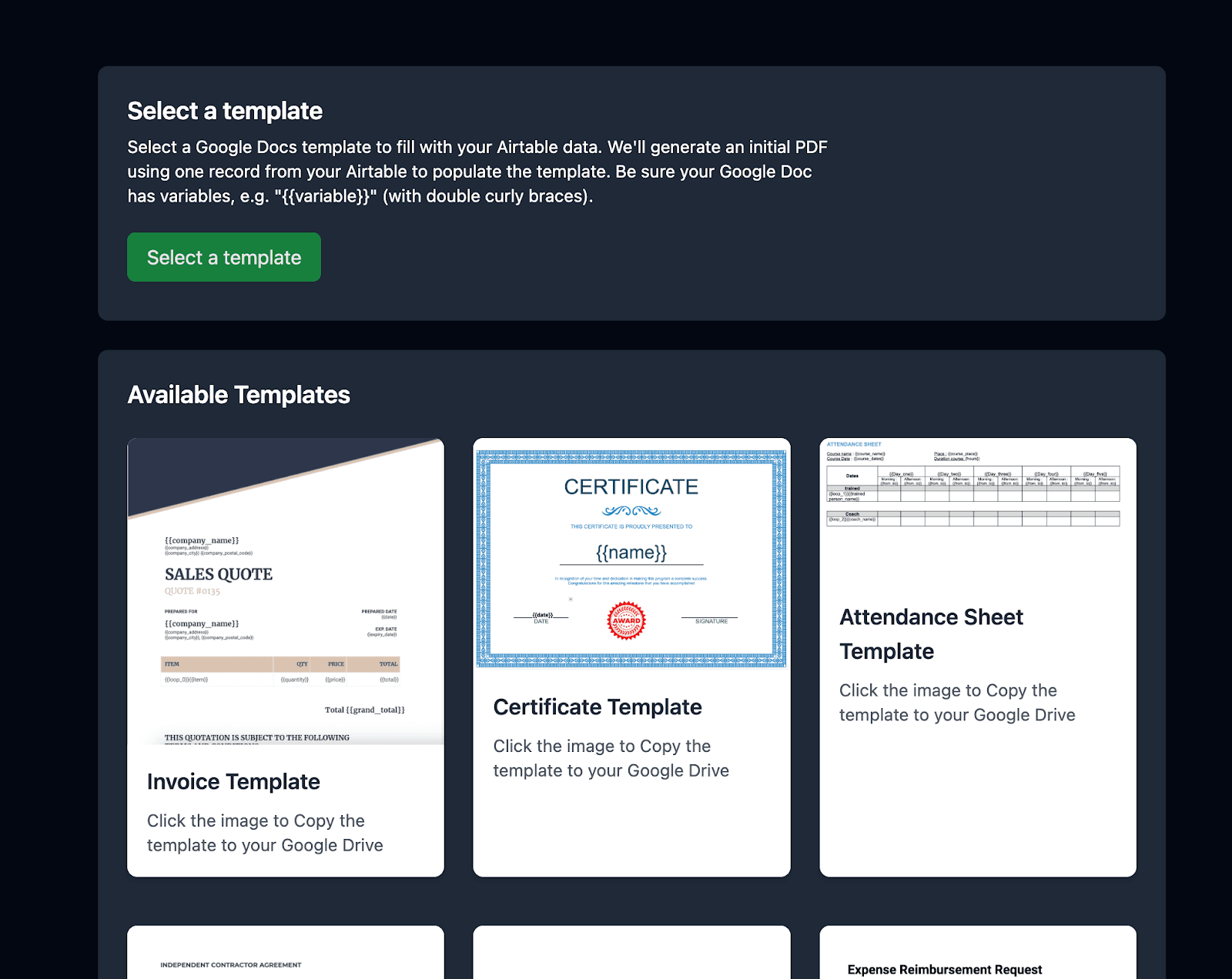
According to the template you’ve selected, it will be duplicated to your Google Drive storage and then you’ll have to select it from the Typeflow interface :
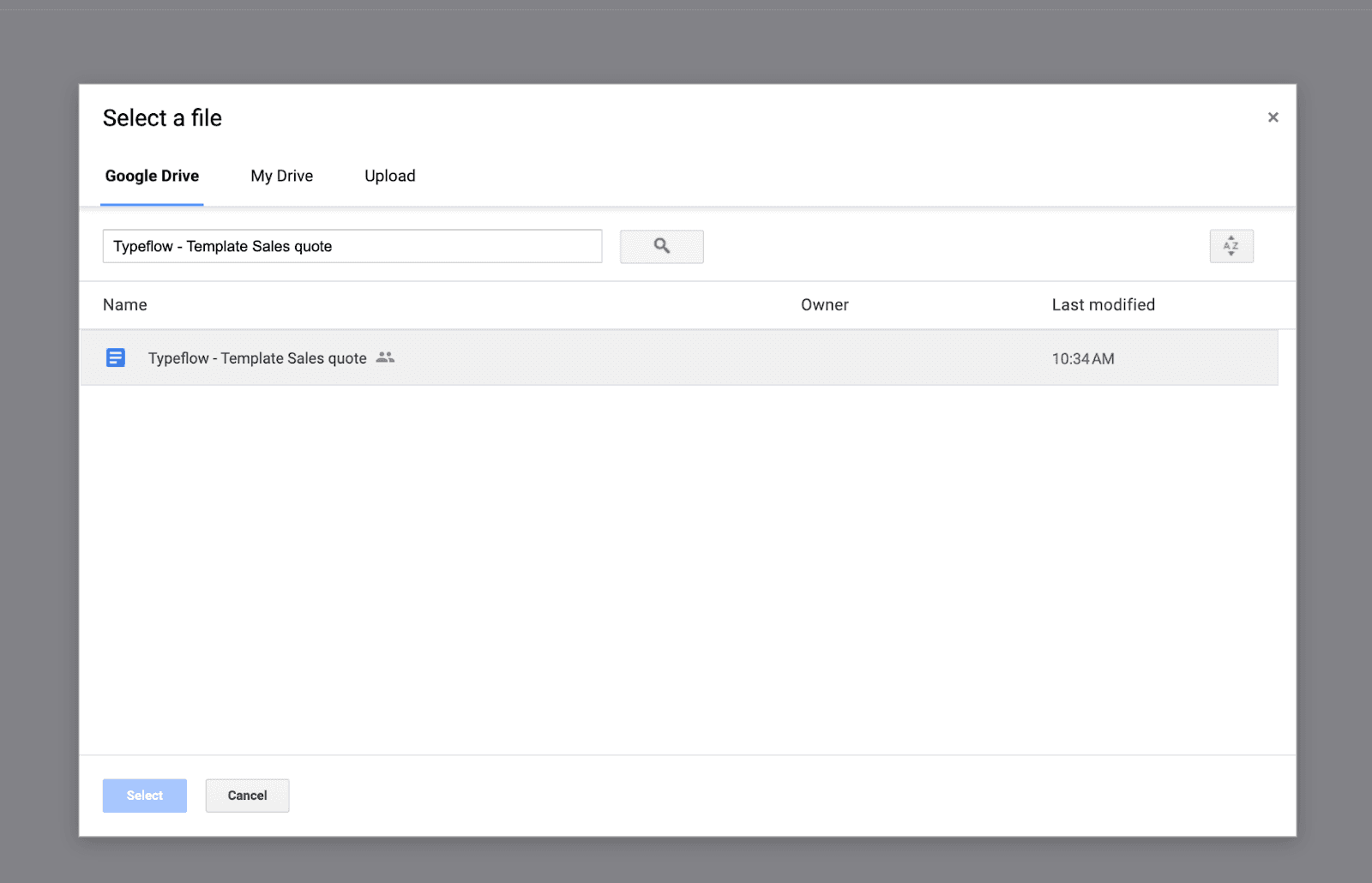
Step 2: Choose Your Base, Table and Attachements
When setting up your PDF generation workflow, selecting the right data sources is crucial. In Typeflow, you'll need to specify which Airtable base and table contain your source data. Pay special attention to attachment fields - these could include images, logos, or other visual elements that need to appear in your final PDF.
To configure:
1. Select your Airtable base from the dropdown menu
2. Choose the specific table containing your records
3. Identify any attachment fields you want to include
4. Verify field accessibility and permissions
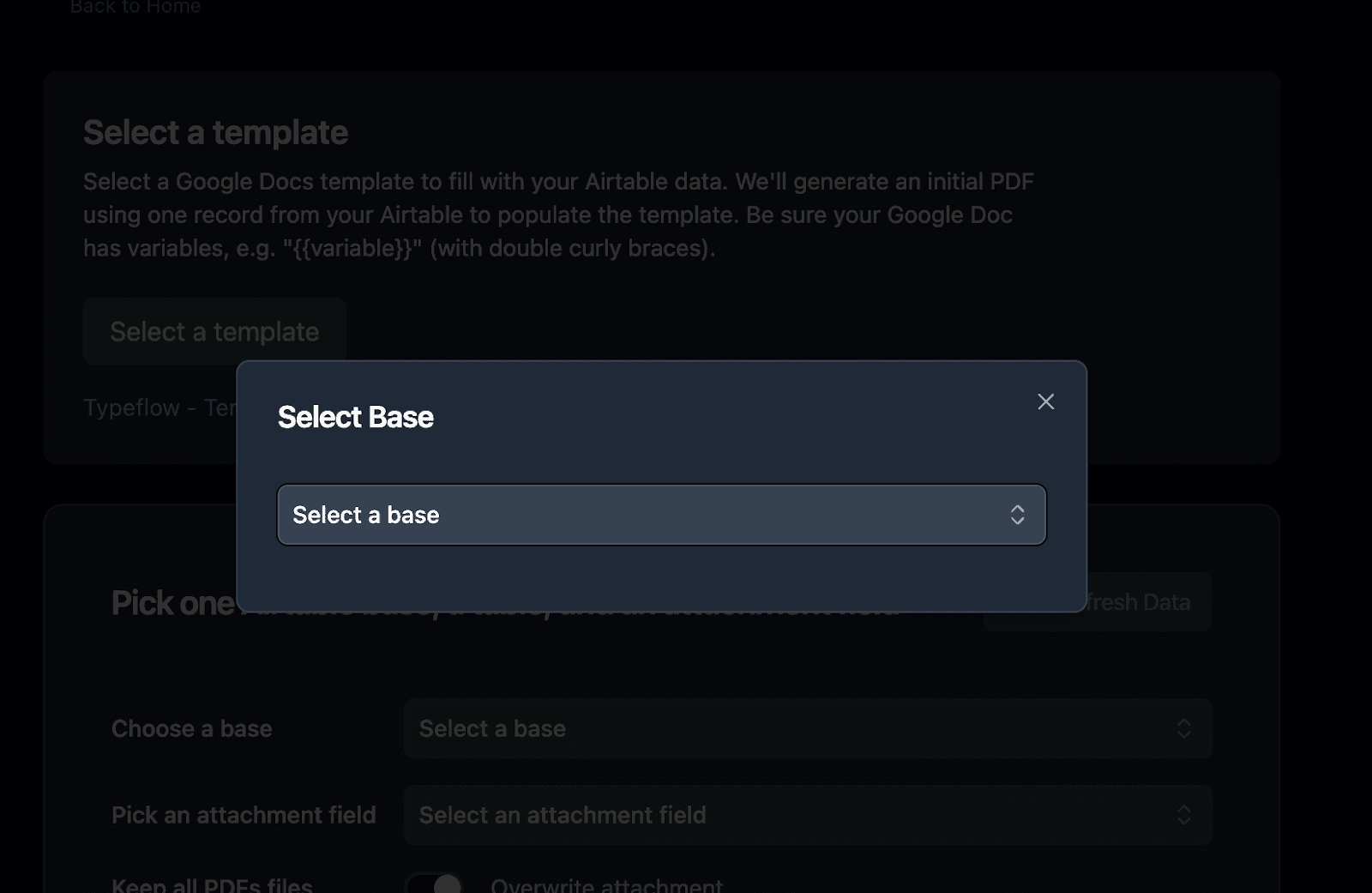
The screen displays your available bases with their icons and names, making it easy to identify and select the right one.
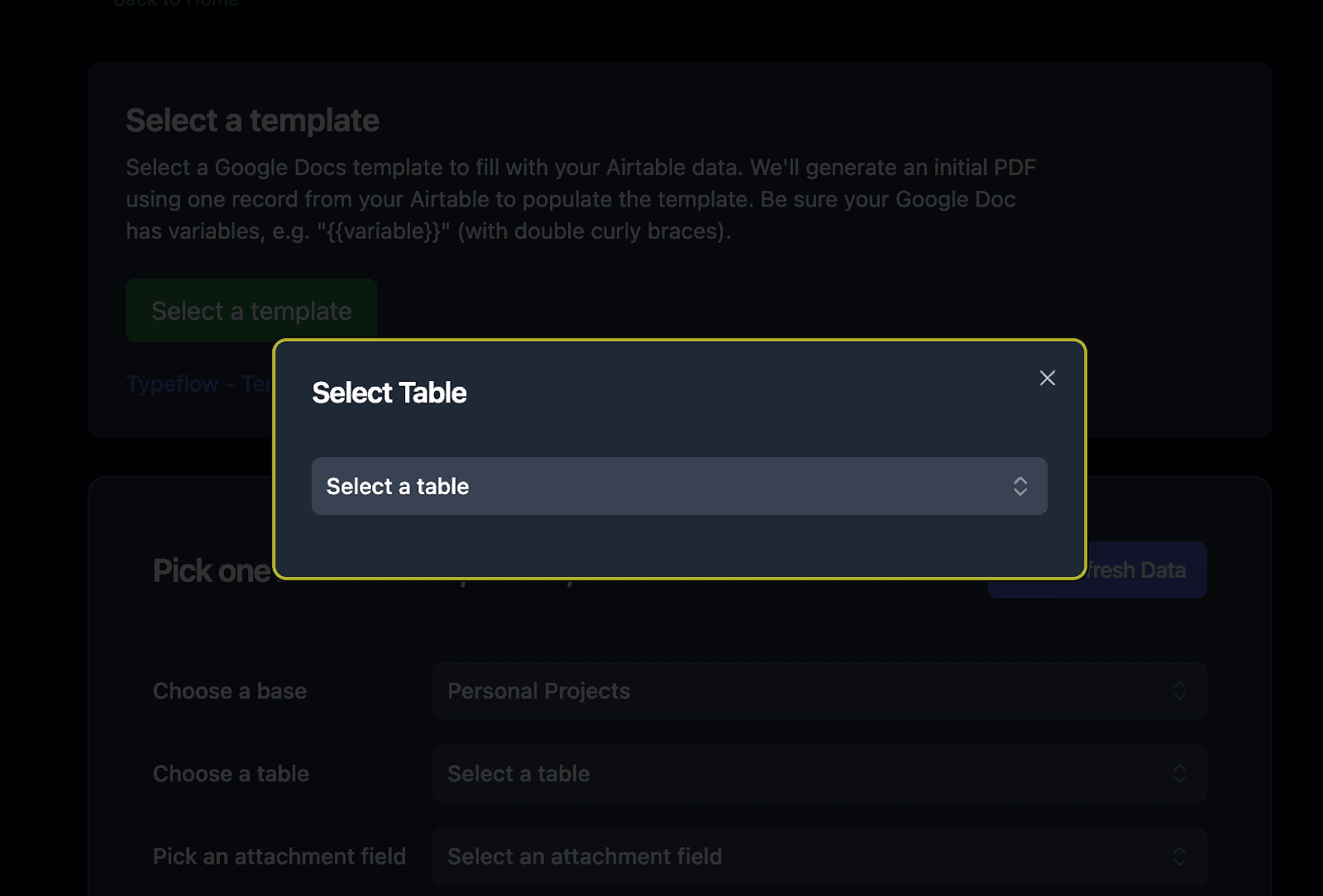
Each table is shown with its name, allowing you to choose the exact data source for your PDF generation.
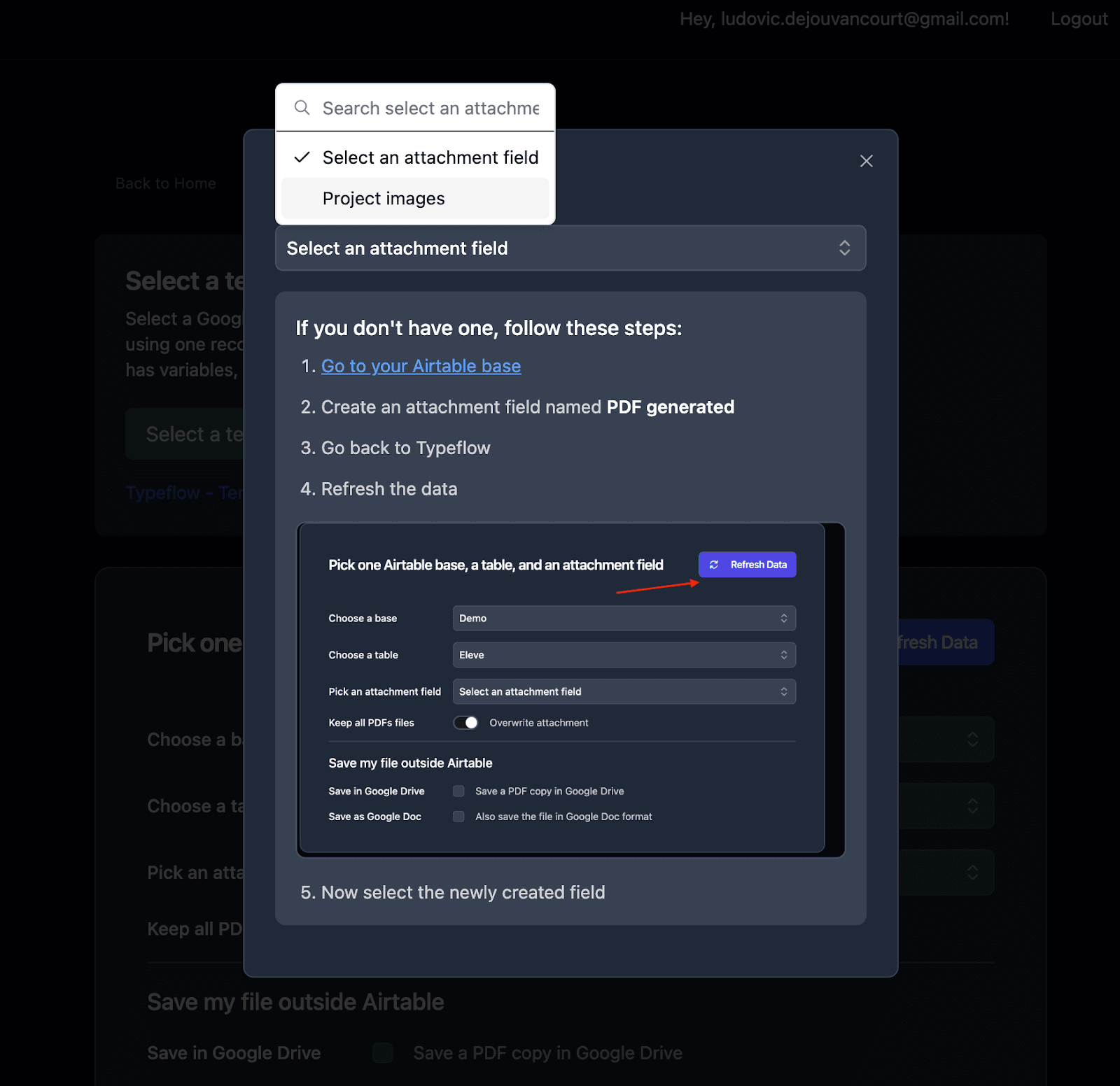
Step 3: Configure Export Settings
1. Choose output format (PDF)
2. Map Airtable fields to template
3. Configure batch settings and Loop_0
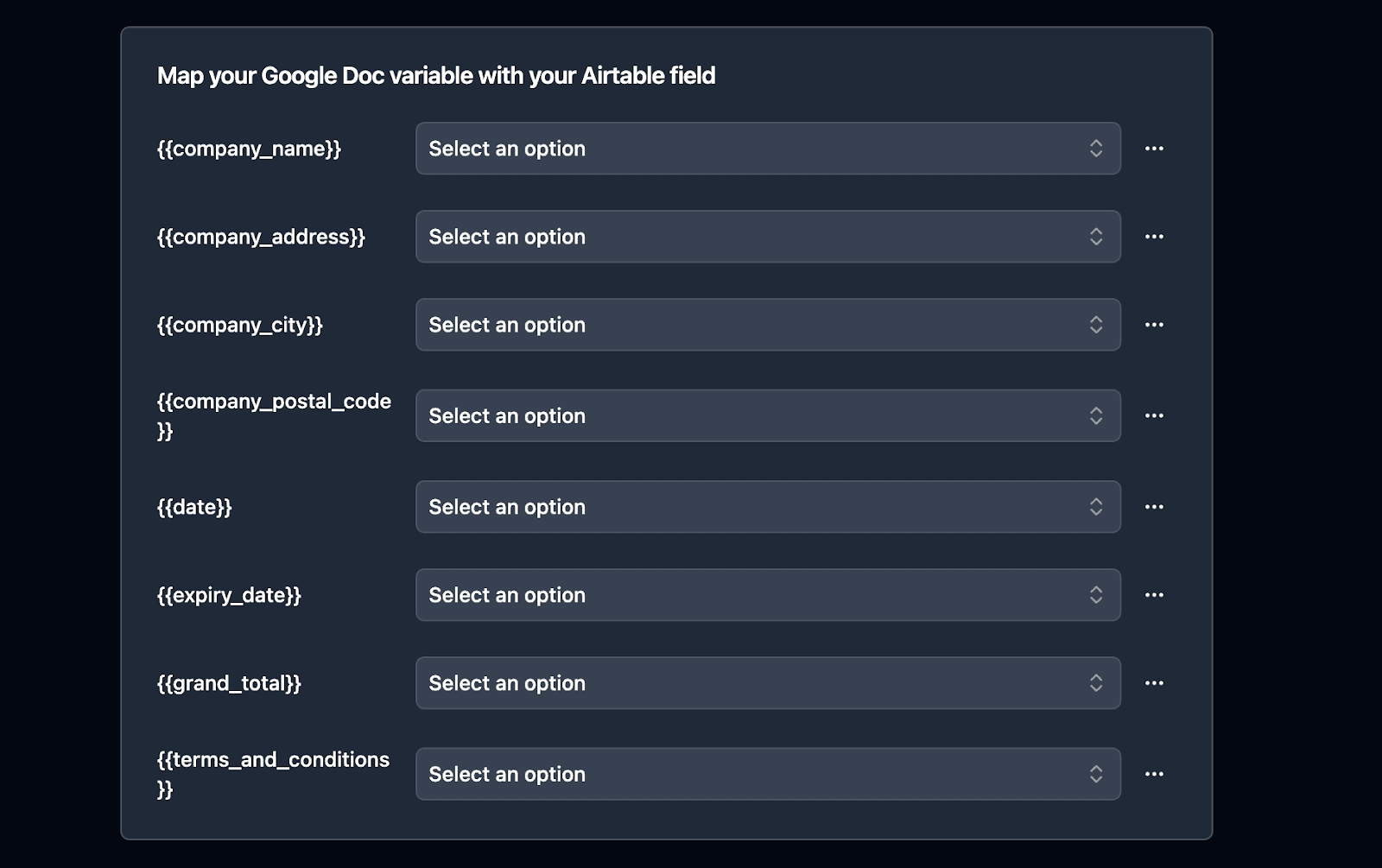
Step 4: Generate PDFs
1. Select records to export
2. Click "Generate a test PDF"
3. Access your generated documents
Best Practices for Airtable to PDF Exports
Ensure smooth and efficient PDF generation by following these proven best practices:
Test and Verify
Before running large-scale exports, always:
1. Start with 2-3 sample records to validate your template
2. Check field mapping accuracy across different record types
3. Ensure all dynamic content renders correctly
Common Issues and Solutions
Field Mapping Problems
If your PDFs show missing or incorrect data:
1. Verify field names match exactly between Airtable and template
2. Check for special characters or spaces in field names
3. Confirm field types are compatible
4. Test with known good data
Flexible and Simple Pricing Model
At Typeflow, we think generating PDFs with Airtable data should be simple and affordable. Our pricing model is designed to be transparent and flexible, making it accessible for businesses of all sizes.
Pricing Details
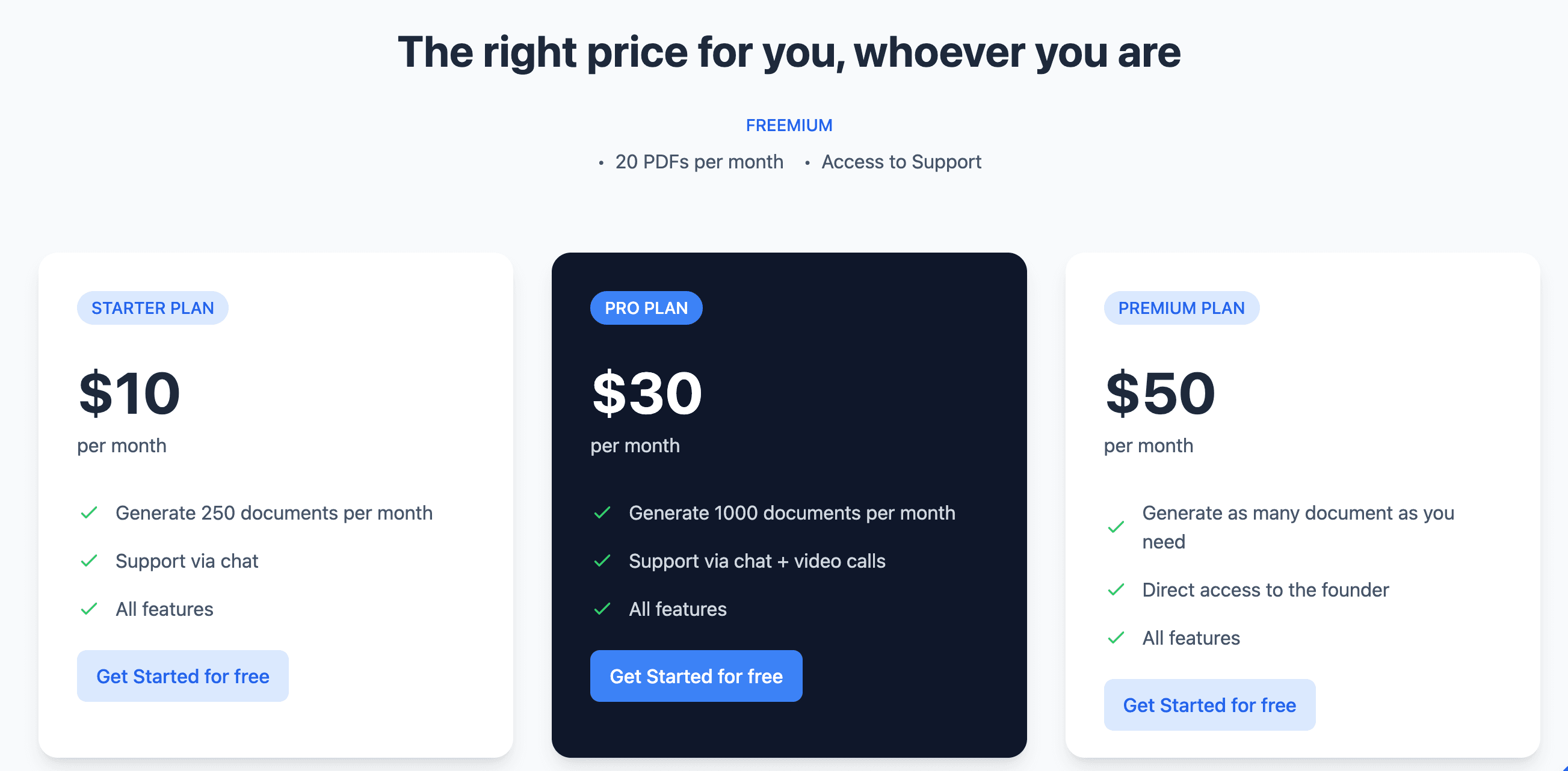
Typeflow integrations
Generating PDFs from your data often requires integration tools - a crucial component that many users overlook until they start their implementation journey. The learning curve can be steep when you need to master both an integration platform and a PDF generation tool simultaneously.
The Integration Landscape
Integration capabilities vary significantly across different platforms. While some tools cast a wide net with multiple integration options, others excel by focusing on specific platforms. This specialization can lead to more robust, user-friendly solutions for particular use cases.
Common Integration Platforms
- Database Tools (Airtable, Google Sheets)
- No-Code Platforms (Bubble, 123 Builder)
- Workflow Automation (Make, Zapier)
- Enterprise Solutions (Salesforce)
- Form Builders (Jotform)
- Document Management (Coda)
Streamlined Integration Approach
Rather than navigating multiple integration paths, a focused integration strategy can offer significant advantages:
- Faster implementation time
- Reduced complexity
- More reliable performance
- Better user experience
- Direct platform support
For organizations primarily working with Airtable data, a dedicated integration approach eliminates unnecessary complexity while providing all the essential PDF generation capabilities needed for professional document automation.
Frequently Asked Questions
Find answers to the most common questions about this feature.
Popular Questions
All Questions
Need more help?
Our team is here to help you solve all your problems and answer your questions.
Contact UsOther articles
How to Export Airtable Data to PDF: A Complete Guide 2025
2025-02-15 • Kevin
A comprehensive guide on how to generate professional PDFs directly from your Airtable data using Typeflow. Step-by-step...
How to create automated PDF documents with Softr, Typeflow and Airtable
2025-05-07 • Kevin
A comprehensive guide on how to generate professional PDFs directly from your Airtable data using Typeflow. Step-by-step...
How to generate automated invoices with Airtable and Typeflow
2025-05-16 • Kevin
A comprehensive guide on how to generate professional invoices directly from your Airtable data using Typeflow. Step-by-...